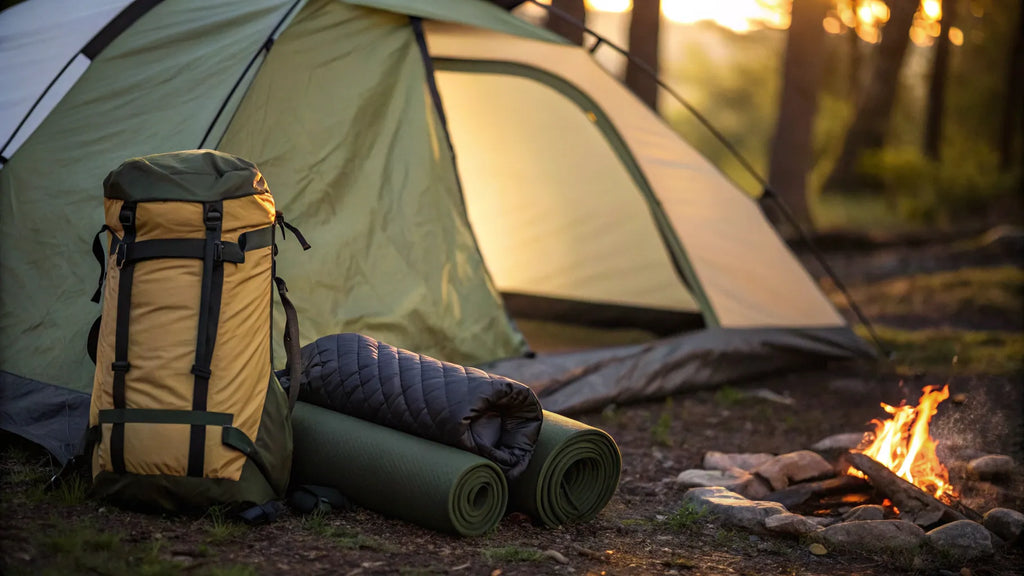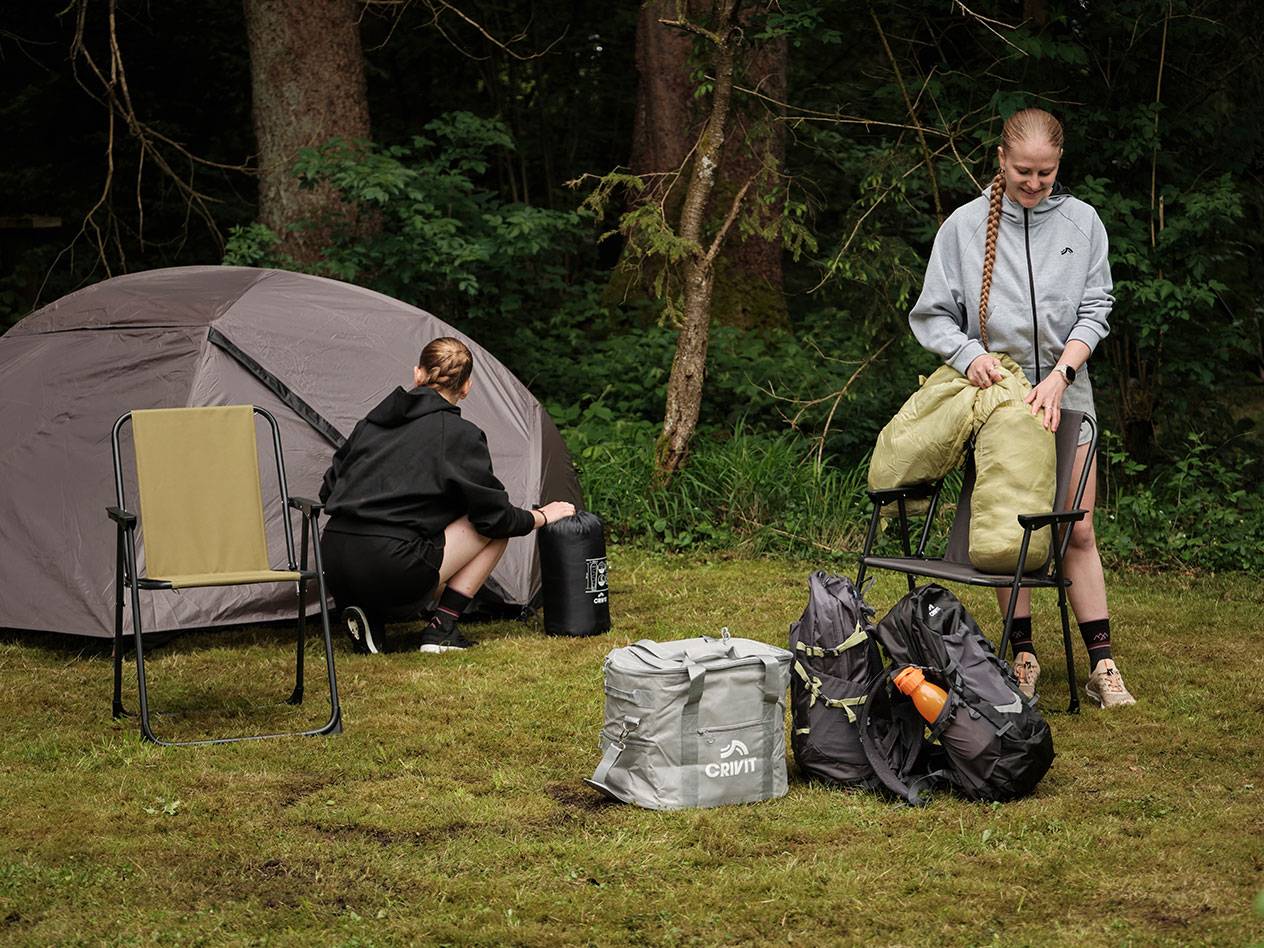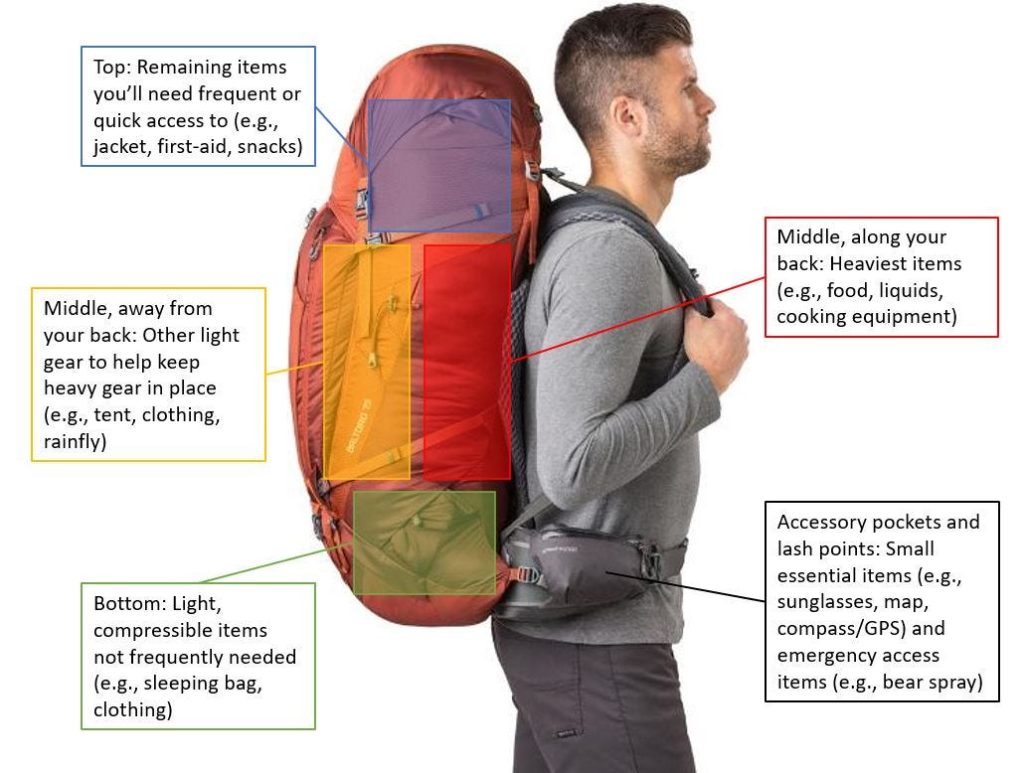Planning a tent camping trip can be exciting, but packing the right gear is key to making your adventure comfortable and fun. You don’t want to arrive and realize you forgot something important.
Imagine sitting by the campfire, knowing you have everything you need to stay safe, dry, and cozy. In this guide, you’ll discover exactly what to pack to make your tent camping experience smooth and stress-free. Keep reading, and get ready to enjoy your time outdoors like never before!
Choosing The Right Tent
Picking the right tent is important for a good camping trip. Your tent keeps you safe and comfortable.
Think about where you will camp and what you need from your tent. This helps you make the best choice.
Tent Types And Sizes
Tents come in many shapes and sizes. Choose one that fits your group and camping style.
Smaller tents are light and easy to carry. Larger tents offer more space but can be heavier.
- Dome tents are easy to set up and stable.
- Cabin tents have tall walls for more room inside.
- Backpacking tents are light and compact.
- Pop-up tents open quickly for fast setup.
- Choose a tent size that fits all campers comfortably.
Weather Considerations
Think about the weather where you camp. Your tent should protect you from rain, wind, and cold.
Look for tents with waterproof materials and strong poles. Good ventilation helps on hot days.
- Three-season tents work for spring, summer, and fall.
- Four-season tents handle snow and strong winds.
- Rainflies add extra rain protection.
- Mesh panels improve airflow but keep bugs out.
Setup And Portability
Choose a tent that is easy to set up. Practice pitching it before your trip.
Consider how much your tent weighs. You want it light if you carry it far.
- Simple pole designs save time during setup.
- Compact tents fit better in backpacks.
- Check if the tent comes with a carry bag.
- Make sure you have all parts before you leave.
Sleeping Gear Essentials
Packing the right sleeping gear is key for a good night in your tent. It keeps you comfortable and warm during camping.
This guide covers sleeping bags, pads, pillows, blankets, and insulation to help you pack smart.
Sleeping Bags And Pads
Choose a sleeping bag that fits the weather and your sleep style. A good pad cushions you from the hard ground.
Sleeping pads add comfort and insulation. Look for lightweight and compact options for easy carrying.
- Pick sleeping bags rated for the lowest temperature you expect.
- Use insulated sleeping pads to block cold from the ground.
- Consider inflatable or foam pads based on weight and comfort needs.
Pillows And Blankets
Small camping pillows support your neck and improve sleep. Blankets add extra warmth and comfort.
Choose pillows that pack down small and blankets that are easy to carry but warm.
- Use compressible or inflatable pillows for less bulk.
- Bring a fleece or wool blanket for extra warmth.
- Extra blankets can double as ground covers or seat cushions.
Insulation And Warmth
Proper insulation keeps you warm on cold nights. Layer your gear to trap heat effectively.
Wear thermal clothing and use insulated liners with your sleeping bag for added warmth.
- Use sleeping bag liners for extra heat retention.
- Bring hand warmers for very cold conditions.
- Place a reflective blanket under your sleeping pad to reflect heat.
Clothing For Camping
Packing the right clothes is key for a good camping trip. Clothes keep you warm, dry, and comfortable.
Think about the weather and activities. Choose clothes that fit the outdoor setting well.
Layering Basics
Layering helps you adjust to temperature changes. You can add or remove clothes as needed.
Start with a base layer that wicks sweat away. Then add an insulating layer for warmth. Finish with a shell layer to block wind and rain.
- Base layer: lightweight, moisture-wicking materials like polyester or merino wool
- Insulating layer: fleece or down for warmth
- Shell layer: waterproof or windproof jacket
Weather-appropriate Attire
Your clothes must match the weather outside. Warm clothes are a must in cold weather. Light clothes work best in hot weather.
Pack rain gear even if the forecast looks clear. Weather can change fast outdoors.
- Cold weather: insulated jacket, gloves, hat
- Hot weather: breathable shirts, sun hat, sunglasses
- Rain: waterproof jacket and pants
Footwear Choices
Good footwear protects your feet and helps with walking on trails. Choose shoes that fit well and suit the terrain.
Bring extra socks to keep feet dry. Waterproof boots are best for wet or rocky areas.
- Hiking boots for rough terrain
- Trail shoes for lighter hikes
- Sandals or camp shoes for relaxing at camp
- Extra pairs of socks

Credit: www.battlbox.com
Cooking And Food Supplies
Cooking while tent camping needs careful planning. Packing the right food supplies helps you enjoy meals outdoors. You want easy-to-cook and safe foods for your trip.
Choosing the right tools makes cooking simpler and keeps your food fresh. Always think about what you will need before you pack.
Portable Stoves And Fuel
Portable stoves are great for cooking at your campsite. They are easy to carry and use. Pick a stove that fits your cooking style and group size.
Fuel types vary by stove. Make sure you bring enough fuel for your whole trip. Store fuel safely away from your tent.
- Small canister stoves use propane or butane fuel
- Liquid fuel stoves work well in cold weather
- Solid fuel tablets are lightweight and simple
- Check fuel compatibility with your stove
Cookware And Utensils
Bring cookware that is lightweight and easy to clean. A pot and pan set helps you cook many meals. Choose utensils that are durable but not heavy.
Consider multi-use tools to save space. A sharp knife, spatula, and spoon are must-haves. Don’t forget a cutting board and plates.
- Non-stick pots and pans save cleaning time
- Collapsible or nesting cookware saves space
- Bring reusable utensils and cups
- Pack a small sponge and biodegradable soap
Food Storage And Safety
Keep your food fresh and safe to eat. Use coolers with ice packs to store perishable items. Keep raw and cooked foods separate to avoid contamination.
Use airtight containers or resealable bags to protect food. Store food away from animals and insects. Clean hands and surfaces before cooking or eating.
- Use insulated coolers for meats and dairy
- Store dry foods in sealed containers
- Keep food in a shaded, cool spot
- Bring hand sanitizer and wipes for cleaning
Lighting And Navigation Tools
Good lighting and navigation tools are important for safe tent camping. They help you see at night and find your way around.
Bringing the right equipment can make your camping trip easier and more enjoyable. Always prepare for low light and unfamiliar paths.
Lanterns And Headlamps
Lanterns give bright light to share with your whole group inside and outside the tent. They work well on tables or hanging spots.
Headlamps keep your hands free for tasks like cooking or setting up the tent. They are easy to wear and direct light where you look.
- Choose LED lanterns for longer battery life
- Bring extra batteries for both lanterns and headlamps
- Pick headlamps with adjustable brightness settings
Maps And Gps Devices
Maps help you understand the area around your campsite. A paper map does not need batteries or signal.
GPS devices show your exact location. They work well when trails are hard to find or if you go far from camp.
- Carry a detailed topographic map of the camping area
- Use a GPS device with preloaded maps and extra batteries
- Learn basic map reading before your trip
Emergency Signaling
Emergency signaling tools help rescuers find you if you get lost or hurt. They can save your life in tough situations.
Common signaling devices include whistles, mirrors, and signal lights. Each tool works best in different conditions.
- Carry a whistle with a loud, clear sound
- Use a signal mirror to reflect sunlight for long distances
- Bring a bright flashlight or signal light for night use

Credit: www.youtube.com
Safety And First Aid
Camping in a tent is fun but staying safe is very important. Carrying first aid and safety gear helps you handle small injuries and risks.
Being prepared means you can enjoy nature without worry. This guide covers what to pack for safety and first aid while tent camping.
First Aid Kits
A first aid kit is a must-have for any camping trip. It helps you treat cuts, scrapes, and other minor injuries quickly.
Include bandages, antiseptic wipes, pain relievers, and any personal medications. Check your kit before you leave to make sure it is complete.
- Adhesive bandages in various sizes
- Antiseptic wipes and ointments
- Pain relievers like ibuprofen or acetaminophen
- Tweezers and scissors
- Allergy medicine if needed
- Instant cold packs
- Medical gloves
Personal Safety Gear
Personal safety gear protects you from accidents and helps you stay visible and warm. Pack items that keep you safe day and night.
Bring a flashlight with extra batteries, a whistle for emergencies, and a multi-tool for quick fixes. Wear sturdy shoes and weather-appropriate clothes.
- Flashlight or headlamp with spare batteries
- Whistle for emergency signaling
- Multi-tool or pocket knife
- Sturdy hiking boots or shoes
- Weather-appropriate clothing and rain gear
- Hat and sunscreen for sun protection
Wildlife Precautions
Wild animals can be dangerous if you are not careful. Learn how to avoid attracting them and what to do if you meet one.
Store food in sealed containers and keep it away from your tent. Make noise when hiking to alert animals of your presence.
- Use bear-proof containers or hang food from a tree
- Do not feed or approach wildlife
- Keep your campsite clean and free of food scraps
- Carry bear spray if in bear country
- Make noise while hiking to avoid surprising animals
Personal Hygiene Items
Keeping clean is important when you camp in a tent. It helps you stay healthy and feel fresh.
Bringing the right hygiene items makes your trip easier and more comfortable.
Toiletries And Sanitation
Pack basic toiletries like soap, toothbrush, and toothpaste. Use biodegradable soap to protect nature.
Bring a small towel and hand sanitizer. These help keep your hands and face clean.
- Biodegradable soap
- Toothbrush and toothpaste
- Small towel or washcloth
- Hand sanitizer
- Feminine hygiene products
- Travel-sized deodorant
Water Filtration
Clean water is a must for hygiene and drinking. Carry a water filter or purification tablets.
These tools remove harmful germs from natural water sources like streams or lakes.
- Portable water filter
- Purification tablets
- Collapsible water bottles
- Water storage containers
Waste Management
Proper waste disposal keeps the campsite clean and safe. Bring bags for trash and used toilet paper.
Use a small shovel to dig a hole for human waste if no toilets are available.
- Trash bags
- Ziplock bags for used items
- Small shovel or trowel
- Portable toilet or waste bags

Credit: www.lidl.com.mt
Additional Useful Gear
When you go tent camping, having the right extra gear can make your trip easier. These items help with small problems and make your campsite more comfortable.
Below are some useful gear ideas that you should consider packing for your camping adventure.
Multi-tools And Repair Kits
Multi-tools are small devices with many uses. They can help you fix gear or prepare food. Repair kits can fix broken tents or sleeping bags quickly.
- Multi-tools often include knives, screwdrivers, and scissors
- Repair kits usually have patches, glue, and extra cords
- Keep these items handy to fix problems fast
Camping Chairs And Tables
Camping chairs and tables make your campsite more comfortable. They give you a place to sit and eat. Folding versions are easy to carry.
- Choose lightweight chairs that fold small
- Small tables help keep food and gear off the ground
- Look for durable materials that can handle outdoor use
Entertainment And Extras
Bring some fun items for downtime at camp. These can keep you busy and relaxed after hiking or exploring.
- Books, cards, or travel games are easy to pack
- Flashlights or lanterns add light for night activities
- Binoculars help you watch birds or wildlife
Frequently Asked Questions
What Essentials Should I Pack For Tent Camping?
When tent camping, pack essentials like a tent, sleeping bag, and camping stove. Don’t forget a first-aid kit, flashlight, and food supplies. Layered clothing and sturdy footwear are crucial. Always carry a map or GPS device for navigation. These items ensure a safe and comfortable camping experience.
How Do I Choose The Right Tent?
Choose a tent based on size, weather conditions, and ease of setup. Consider the number of campers and camping duration. Look for waterproof and durable materials. Ventilation and storage pockets are important features. A well-chosen tent enhances comfort and safety during your camping adventure.
What Food Should I Bring For Camping?
Bring non-perishable foods like canned goods, pasta, and rice for camping. Include snacks like nuts and dried fruits. Plan easy-to-cook meals and pack a portable stove. Don’t forget utensils, a cooler, and water purification tablets. Proper food planning ensures nourishment and enjoyment during your camping trip.
How Can I Stay Warm While Tent Camping?
To stay warm, use a quality sleeping bag and insulated sleeping pad. Dress in layers and wear thermal clothing. Keep your head and feet covered. Use a tent heater if safe and allowed. Staying dry is crucial, so waterproof gear is essential.
These tips help maintain warmth during cold camping nights.
Conclusion
Packing well makes tent camping more fun and safe. Bring only what you need to stay light and ready. Check your list twice to avoid forgetting essentials. Prepare for weather changes with proper clothing and gear. Good planning helps you enjoy nature without stress.
Remember, simple and smart packing keeps your trip smooth. Ready for your adventure? Happy camping!

